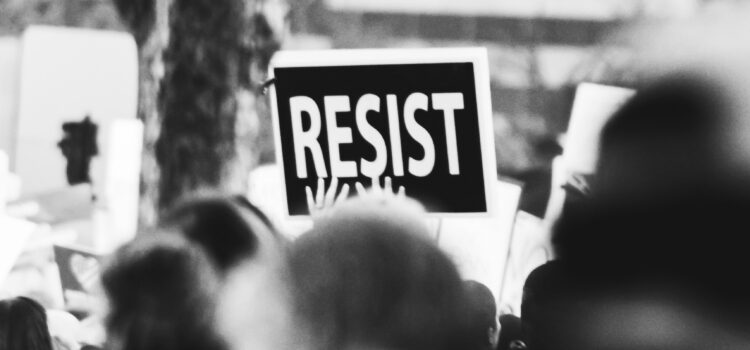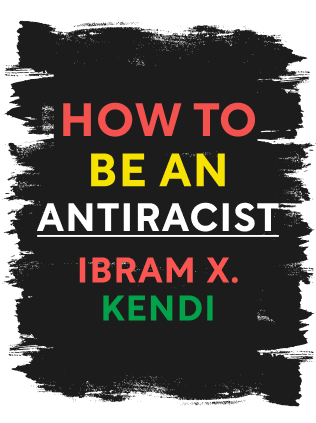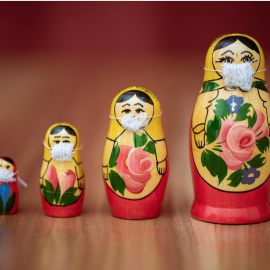

This article is an excerpt from the Shortform book guide to "How to Be an Antiracist" by tIbram X. Kendi. Shortform has the world's best summaries and analyses of books you should be reading.
Like this article? Sign up for a free trial here .
Is it possible for Black people to be racist? Is there such a thing as anti-white racism?
Anti-white racism is racism directed at people of European descent. Some argue that it isn’t possible for Black people to be racist against white people because of a lack of a power, but How to Be an Antiracist emphasizes that these claims are false.
Keep reading to understand how Black people can be racist too and why anti-white racism does exist.
Powerless Defense
Powerless defense is the idea that it’s impossible for Black people to be racist because they lack power. This concept appeared in the 1960s as a response to accusations of anti-White racism. Black people defended themselves by saying that they couldn’t possibly be racist towards White people because they didn’t have any political power. But, Black people can be racist too.
Suggesting that people of color don’t have power results in several negative consequences:
- It lowers expectations for people of color who do hold positions of power—if they or others incorrectly assume people of color never have real power, they’re not held accountable when they don’t act in anti-racist ways.
- It suggests that people of color have no power to change things—racist policies and inequities are here to stay.
- It defends people of color when they do racist things.
- It downplays the historical oppression of people of color by other people of color. White people have given people of color the power to oppress others, and some people of color have used this power for personal gain.
- It’s another version of racism—White people have more power and, therefore, are superior to Black people.
Additionally, the idea of powerless defense is flawed. Everyone, even those who don’t hold a high political position, has power. Black power is more limited than White power, but it exists—if White people had absolute power, they would control everyone’s minds, and not only would no Black people reach positions of power, it would never even occur to them to try for power.
Anti-White Racism
Anti-white racism is the belief that people of European descent are behaviorally, biologically, or culturally lesser than those of other racial groups, or the belief that all White people are part of racist power. (The definition of anti-White racism doesn’t include racist policy that creates racial inequity because historically, White people have been favored by policy.)
White people have done a lot of terrible things, such as enslaving and massacring people. However, this isn’t because they’re genetically, culturally, or behaviorally evil. White people are only a problem when they create racist policies, subscribe to racist ideas, and then deny that they’re racist.
History and Invention of Anti-White Racism
Similar to how White people made up creation stories and justifications for the inferiority of other races, non-White people did the same thing towards White people. The beliefs in these theories show that Black people can be racist too. There are four incorrect theories about how White people were created:
Theory #1: Created by an evil scientist. Elijah Muhammad, who led the Nation of Islam, wrote a book called Message to the Blackman in America in which he explained how White people came into being. Muhammad believed that 6,000 years ago, the world was all Black. Yakub, an evil Black scientist, was exiled. He wanted to get revenge on society so he created White people. When Yakub’s White people invaded Black society, Black authorities imprisoned them in caves, but Moses released them when he “lifted up the serpent in the wilderness.” Moses then taught White people how to rule, which ultimately led to the inequities between Black and White people today. Some Black racism against whites is rooted in this theory.
Malcolm X was influenced by Muhammad’s writings. He converted to the Nation of Islam and when he got out of prison in 1952, he used his speaking and organizing skills to grow the movement. However, he left in the Nation of Islam in 1964 and converted to orthodox Islam. By this point, he had rejected Muhammad’s ideas and creation story because he believed they were racist.
Theory #2: Two-cradle theory. This theory, created by Cheikh Anta Diop, a Senegalese scholar, states that people who developed in the northern cradle (Europeans) developed barbarianism and violence because they needed it to survive their harsh climate. People who developed in the south cradle (Africa) lived in a plentiful environment, so they developed spirituality and peacefulness instead.
Theory #3: Influenced by the Ice Age. Like the two-cradle theory, Michael Bradley’s explanation for the behavior of White people is based on environmental determinism. In 1978, Bradley wrote in The Iceman Inheritance that White people are ruthless because they developed in the harsh conditions of the Ice Age.
Theory #4: Recessive genes. This is the only biological theory. Frances Cress Welsing, a psychiatrist, wrote in 1982’s The Isis Papers that the genes that cause darker skin are dominant and those that cause white skin are recessive. White people are already a minority and fear that they’ll go extinct. This fear leads them to act the way they do.
White Racist Power
The author believes that anti-White racism is actually a form of anti-Black racism, because it ends up hurting Black people as well as (if not more than) White people. White racist power does well in a climate of anti-White racism—when people of color direct their hatred towards regular White people, they’re no longer focusing on White racist power and its policies, which are the real problem.
Additionally, racist power can distract people from the real problem by convincing regular White people that there are no policy problems, and that changes to policy would result in them losing their jobs, rights, or privileges. Plenty of White people are worried about anti-White discrimination. For example, worker Tim Hershman complained to a reporter that he’d been passed over for a promotion because superiors seemed to favor Black candidates. (Hershman lost the job to a White finalist, so his perception was incorrect.)
However, while regular White people can benefit from the policies of racist powers, they would benefit far more from a more equal society. Racist power has been responsible for things such as slashing school budgets, creating economic inequity, and destroying unions. Many policies favor only superrich White men, not White people in general.
Ibram’s Experiences With Anti-White Racism
Ibram started believing in the ideas of Black racism against whites after the 2000 election when Black voter suppression helped George W. Bush win the presidency. Gore, whom Ibram supported, would have won, but officials manipulated voters, the counts, and the ballots:
- Black people who registered to vote never received their paperwork.
- 50,000 alleged felons were struck from the list of eligible voters. Many of the people on the lists weren’t felons, and it was difficult to get back on the list.
- Palm Beach County’s ballots were so complicated that people accidentally spoiled them or voted for the wrong candidate.
- Gadsden County, where many Black citizens lived, had the highest spoilage rate in Florida.
- Bush’s legal team instigated recounts in areas where he’d lost and suppressed recounts in areas where he’d won.
- Ballots from Black people were ten times more likely to be rejected than those from White people.
To Ibram’s disappointment, Gore conceded quickly, without a fight. Ibram felt the Democrats had passively let Bush “steal” the presidency, and he decided that all White people cared about was maintaining a functioning democracy for White people. Ibram maintained his anti-White racism throughout his second year of college and in 2003, wrote his first piece in FAMU’s student newspaper. Although it was about how Black people should stop hating White people, it still demonstrated his anti-white racism. In theorizing that White people were attempting to “destroy” Blacks because they were a “different breed” just trying to survive—they had recessive genes and were a global minority—Ibram suggested that White people as a whole were racist (a racist idea itself). He didn’t yet understand that the real reason Black racism against whites is a problem is that they aren’t the problem—racist policies are the problem.

———End of Preview———
Like what you just read? Read the rest of the world's best book summary and analysis of Ibram X. Kendi's "How to Be an Antiracist" at Shortform .
Here's what you'll find in our full How to Be an Antiracist summary :
- What racism is and how it evolved
- How you might have subtle racist thoughts and not even be aware of them
- Why being "not racist" isn't good enough






